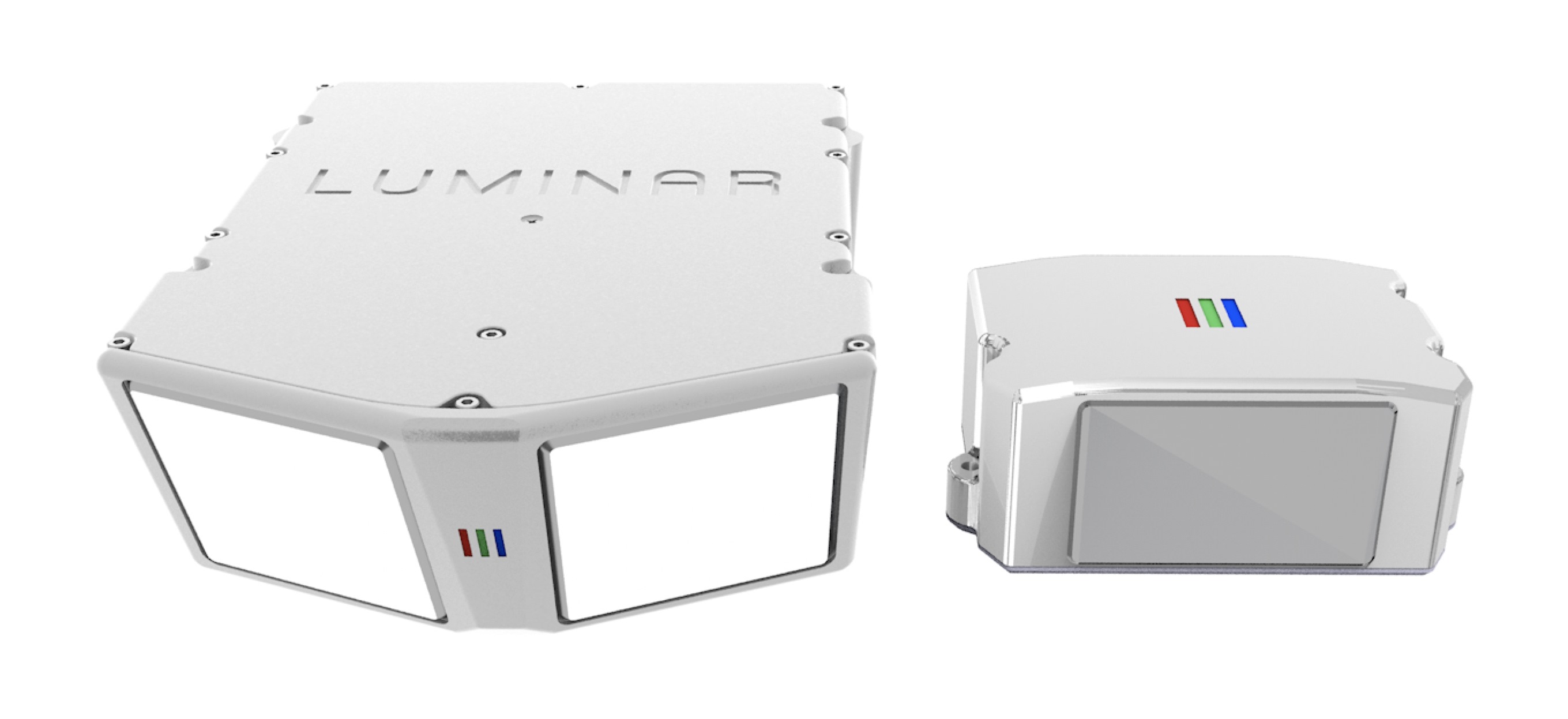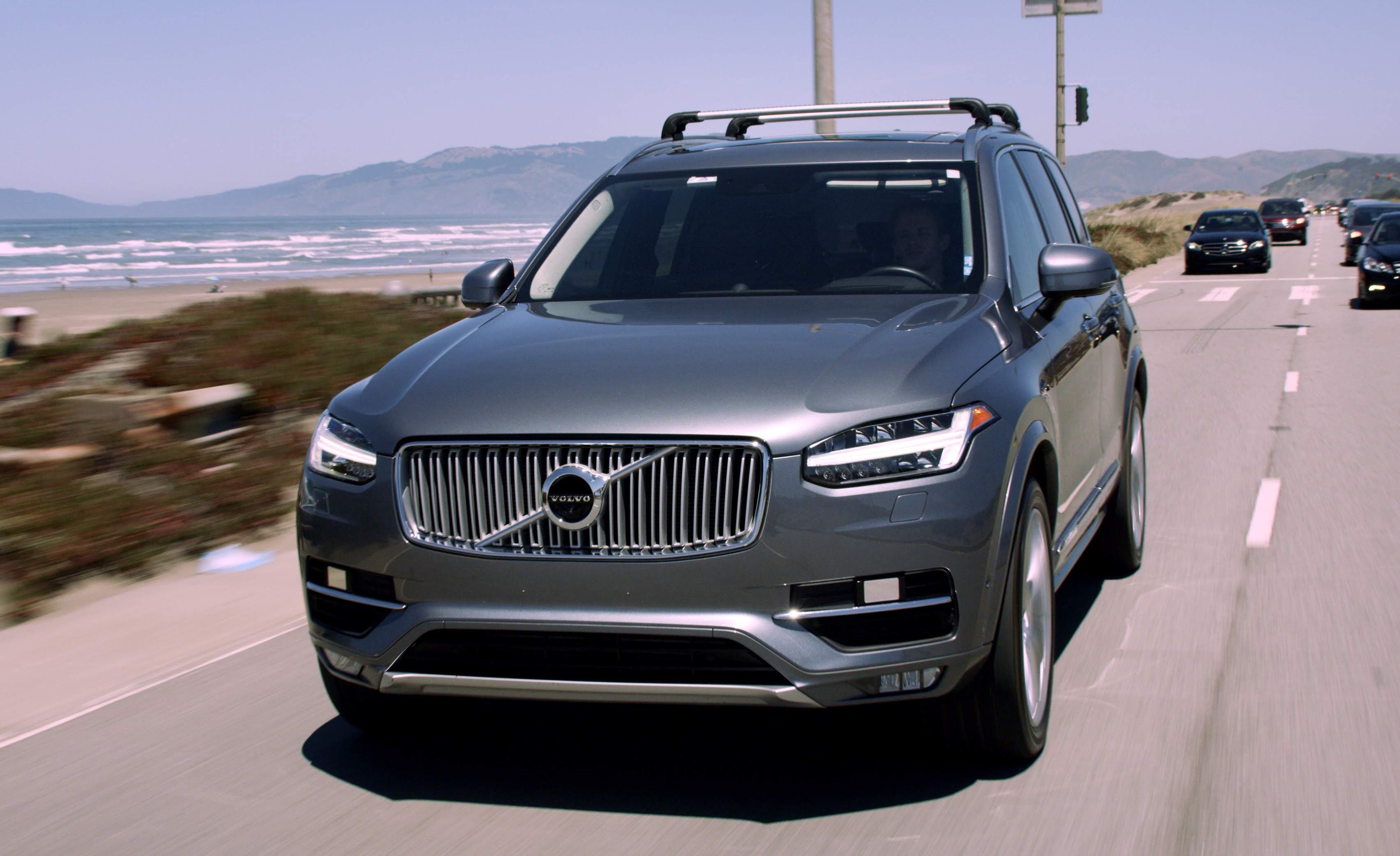Luminar is one of the major players in the new crop of lidar companies that have sprung up all over the world, and it’s moving fast to outpace its peers. Today the company announced a new $100M funding round, bringing its total raised to over $250M — as well as a perception platform and a new, compact lidar unit aimed at inclusion in actual cars. Big day!
The new hardware, called Iris, looks to be about a third of the size of the test unit Luminar has been sticking on vehicles thus far. That one was about the size of a couple hardbacks stacked up, and Iris is more like a really thick sandwich.
Size is very important, of course, since few cars just have caverns of unused space hidden away in prime surfaces like the corners and windshield area. Other lidar makers have lowered the profiles of their hardware in various ways; Luminar seems to have compactified in a fairly straightforward fashion, getting everything into a package smaller in every dimension.

Test model, left, Iris on the right.
Photos of Iris put it in various positions: below the headlights on one car, attached to the rear-view mirror in another, and high up atop the cabin on a semi truck. It’s small enough that it won’t have to displace other components too much, although of course competitors are aiming to make theirs even more easy to integrate. That won’t matter, Luminar founder and CEO Austin Russell told me recently, if they can’t get it out of the lab.
“The development stage is a huge undertaking — to actually move it towards real-world adoption and into true
series production vehicles,” he said (among many other things). The company who gets there first will lead the industry, and naturally he plans to make Luminar that company.
Part of that is of course the production process, which has been vastly improved over the last couple years. These units can be made quickly enough that they can be supplied by the thousands rather than dozens, and the cost has dropped precipitously — by design.
Iris will cost under $1,000 per unit for production vehicles seeking serious autonomy, and for $500 you can get a more limited version for more limited purposes like driver assistance, or ADAS. Luminar says Iris is “slated to launch commercially on production vehicles beginning in 2022,” but that doesn’t mean necessarily that they’re shipping to customers right now. The company is negotiating more than a billion dollars in contracts at present, a representative told me, and 2022 would be the earliest that vehicles with Iris could be made available.

The Iris units are about a foot below the center of the headlight units here. Note that this is not a production vehicle, just a test one.
Another part of integration is software. The signal from the sensor has to go somewhere, and while some lidar companies have indicated they plan to let the carmaker or whoever deal with it their own way, others have opted to build up the tech stack and create “perception” software on top of the lidar. Perception software can be a range of things: something as simple as drawing boxes around objects identified as people would count, as would a much richer process that flags intentions, gaze directions, characterizes motions and suspected next actions, and so on.
Luminar has opted to build into perception, or rather has revealed that it has been working on it for some time. It now has 60 people on the task split between Palo Alto and Orlando, and hired a new VP of Software, former robo-taxi head at Daimler Christoph Schroder.
What exactly will be the nature and limitations of Luminar’s perception stack? There are dangers waiting if you decide to take it too far, since at some point you begin to compete with your customers, carmakers who have their own perception and control stacks that may or may not overlap with yours. The company gave very few details as to what specifically would be covered by its platform, but no doubt that will become clearer as the product itself matures.
Last and certainly not least is the matter of the $100 million in additional funding. This brings Luminar to a total of over a quarter of a billion dollars in the last few years, matching its competitor Innoviz, which has made similar decisions regarding commercialization and development.
The list of investors has gotten quite long, so I’ll just quote Luminar here:
G2VP, Moore Strategic Ventures, LLC, Nick Woodman, The Westly Group, 1517 Fund / Peter Thiel, Canvas Ventures, along with strategic investors Corning Inc, Cornes, and Volvo Cars Tech Fund.
The board has also grown, with former Broadcom exec Scott McGregor and G2VP’s Ben Kortland joining the table.
We may have already passed “peak lidar” as far as sheer number of deals and startups in the space, but that doesn’t mean things are going to cool down. If anything the opposite, as established companies battle over lucrative partnerships and begin eating one another to stay competitive. Seems like Luminar has no plans on becoming a meal.
Read Full Article
No comments:
Post a Comment